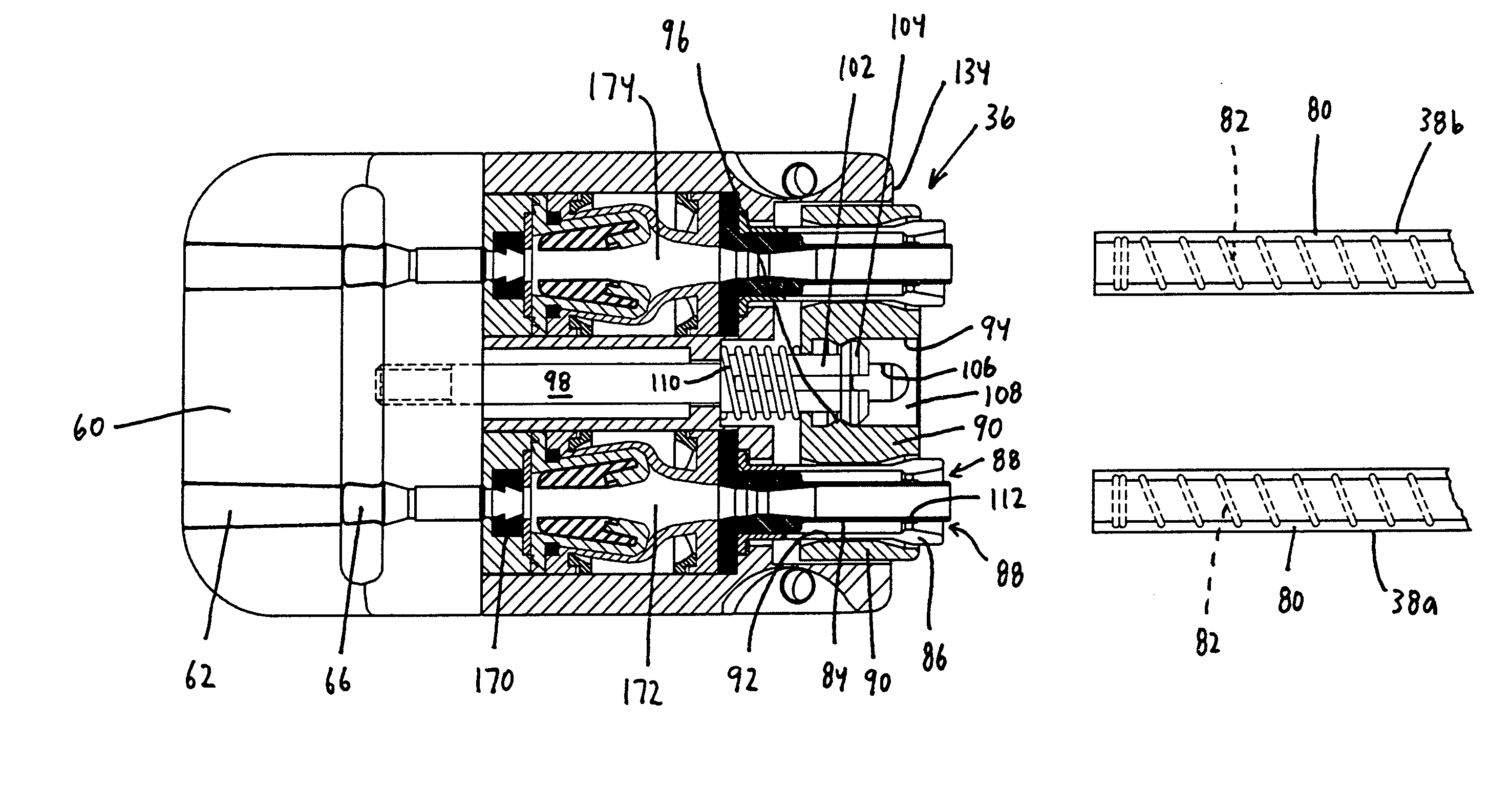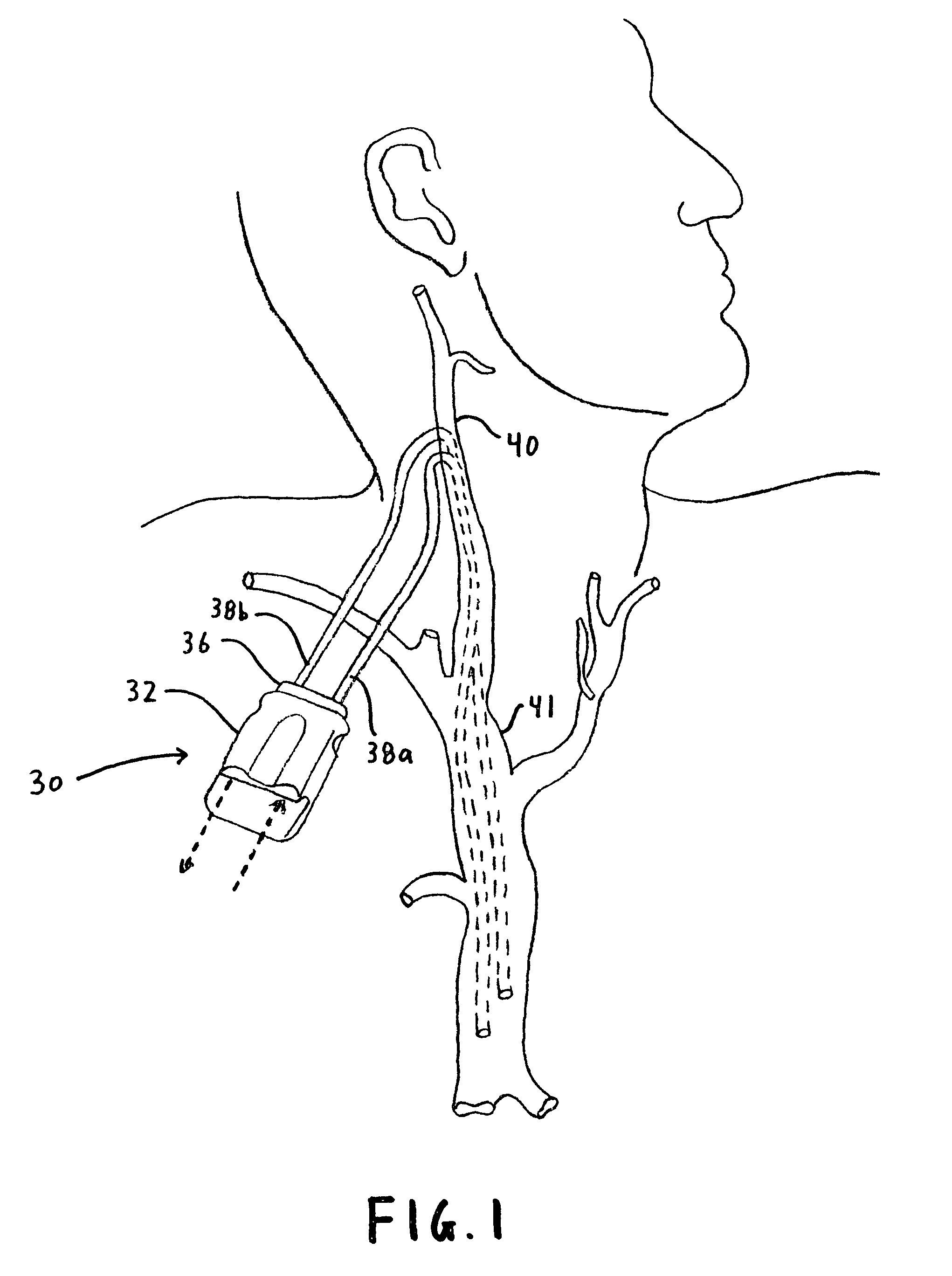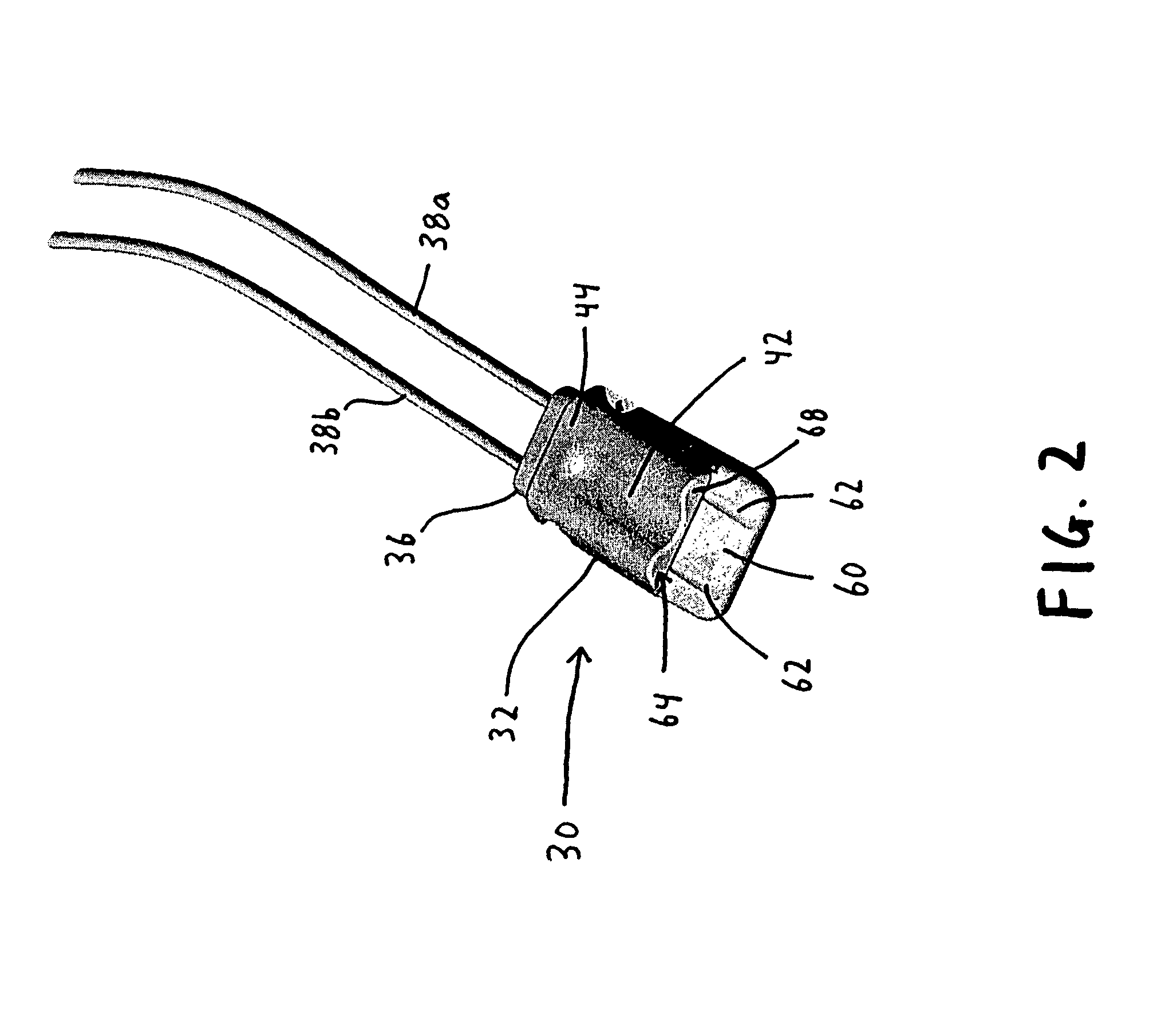Port device for subcutaneous access to the vascular system of a patient
a port device and vascular system technology, applied in the direction of medical devices, other medical devices, tube connectors, etc., can solve the problems of difficult to form fibrin pockets around the port, tend to have a somewhat irregular external shape, and create various problems, so as to reduce the likelihood of surrounding tissue erosion and lessen the impediment to the formation of fibrin pockets
- Summary
- Abstract
- Description
- Claims
- Application Information
AI Technical Summary
Benefits of technology
Problems solved by technology
Method used
Image
Examples
Embodiment Construction
[0042]Referring to FIGS. 1–3, it will be seen that the port device 30 of the present invention is adapted to be disposed subcutaneously in the body of a patient, usually in the chest region. The device includes a housing 32 having a pair of needle entrances 34a, 34b which are accessed subcutaneously by a pair of needles (not shown) connected to conduits (not shown) for flowing fluid, such as blood, from the housing 32 and to the housing. In the aforementioned U.S. patent application Ser. No. 09 / 226,956, incorporated herein by reference, various configurations and arrangements of needles are discussed in detail.
[0043]The housing 32 is provided with means for retaining the needles and with flow paths for channeling the flow therethrough of fluid received from, and directed toward, the needles, as discussed in detail in the '956 patent application.
[0044]The port device 30 further includes lock means 36 for securely fixing to the housing 32 a pair of catheters 38a, 38b which may, in one...
PUM
 Login to View More
Login to View More Abstract
Description
Claims
Application Information
 Login to View More
Login to View More - R&D
- Intellectual Property
- Life Sciences
- Materials
- Tech Scout
- Unparalleled Data Quality
- Higher Quality Content
- 60% Fewer Hallucinations
Browse by: Latest US Patents, China's latest patents, Technical Efficacy Thesaurus, Application Domain, Technology Topic, Popular Technical Reports.
© 2025 PatSnap. All rights reserved.Legal|Privacy policy|Modern Slavery Act Transparency Statement|Sitemap|About US| Contact US: help@patsnap.com



